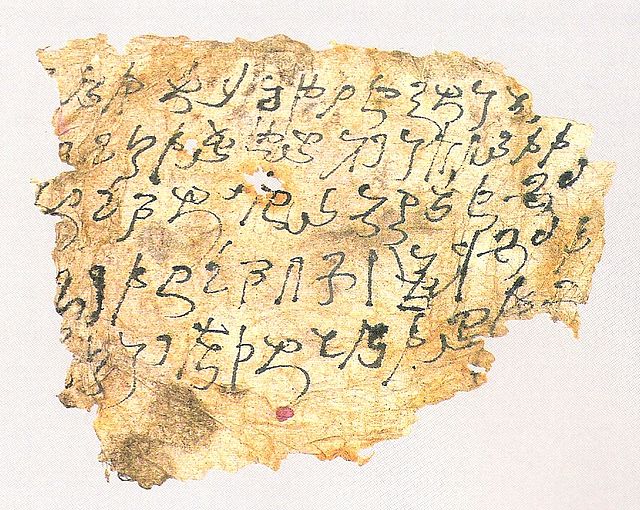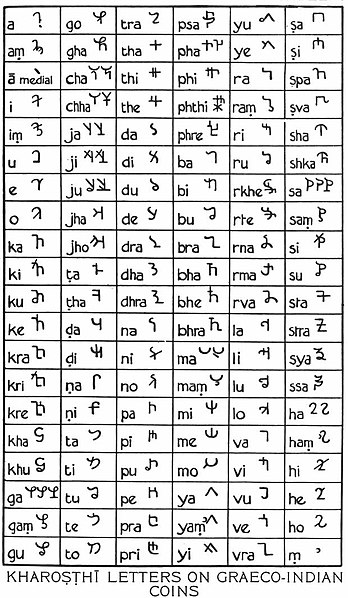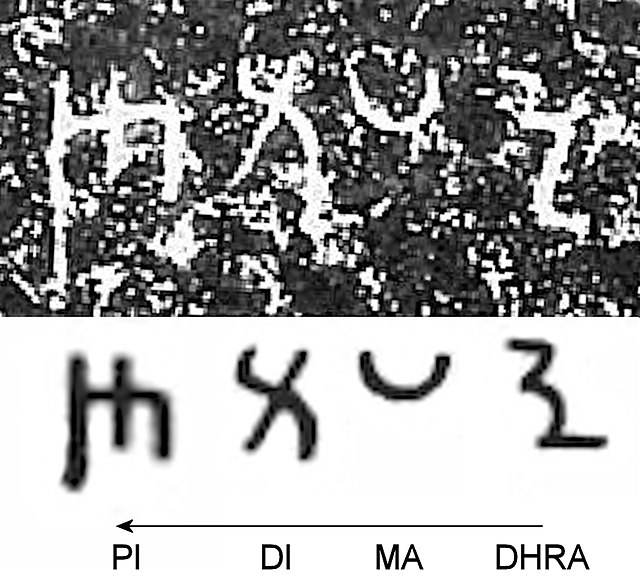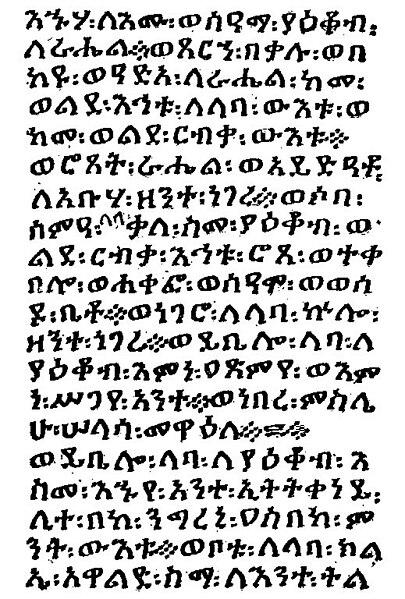The Kharoṣṭhī script, also known as the Gāndhārī script, was an ancient Indic script used by various peoples from the north-western outskirts of the Indian subcontinent to Central Asia via Afghanistan. An abugida, it was introduced at least by the middle of the 3rd century BCE, possibly during the 4th century BCE, and remained in use until it died out in its homeland around the 3rd century CE.
Kharosthi
Kharoshthi letters.
The words "Dhrama-Dipi" ("Inscription of the Dharma") in Kharosthi, in Edict No.1 of the Shahbazgarhi Major Rock Edict of Ashoka (circa 250 BCE).
Kharoshthi on a coin of Indo-Greek king Artemidoros Aniketos, reading "Rajatirajasa Moasa Putasa cha Artemidorasa".
An abugida – sometimes also called alphasyllabary, neosyllabary, or pseudo-alphabet – is a segmental writing system in which consonant–vowel sequences are written as units; each unit is based on a consonant letter, and vowel notation is secondary, similar to a diacritical mark. This contrasts with a full alphabet, in which vowels have status equal to consonants, and with an abjad, in which vowel marking is absent, partial, or optional – in less formal contexts, all three types of the script may be termed "alphabets". The terms also contrast them with a syllabary, in which a single symbol denotes the combination of one consonant and one vowel.
A 19th-century manuscript in the Devanagari script
The Ge'ez script, an abugida of Eritrea and Ethiopia






